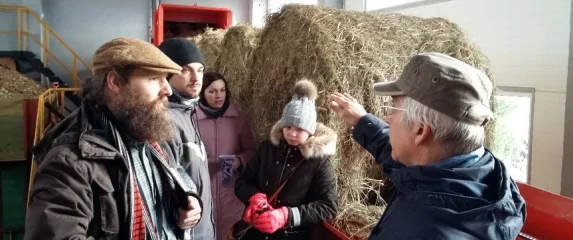Paludiculture in the Baltic Countries – Climate Protection by Productive Use of Rewetted Peatlands
The project has been completed. Its work underscored the need for climate-friendly moorland management in the Baltic states. It examined how peatlands can be used in paludiculture after rewetting to replace fossil resources.
Agriculture Carbon Removals and Sinks Peatlands

Project info
Estonia, Latvia, Lithuania
10/17 - 08/20
National governments, Regional governments, Consumers, Private sector, Public sector
639,206.54 €
Contact info
Andreas Haberl
- Estonian Fund for Nature (ELF)
- Estonian Wetland Society
- Lake and Peatland Research Centre Latvia (L&PRC)
- Lithuanian Fund for Nature
Background
The land of the Baltic states (Estonia, Latvia and Lithuania) contains 21,000 km2 of peatlands, more than 50% of which have been drained or mined. The three countries belong to the top 10 emitters in Europe, with greenhouse gases produced from drained moorland (Latvia is 5th, Estonia 8th and Lithuania 9th). Rewetting peatlands and introducing climate-friendly wetlands management (paludiculture) can prevent significant quantities of emissions. In this context, paludiculture doubles the effect of reductions. Firstly, rewetting stops the peat from decaying and thereby reduces the emissions from peatland; secondly, fossil resources can be replaced by renewable biomass. In addition, peat mosses can be used as horticultural substrates and reeds provide a good fuel source.

Project
In every country, the project identified and prioritised potential sites of peatland for climate-friendly moorland management, working together with stakeholder representatives from the government and the authorities. Over and above this, it raised the partners’ awareness and expanded capacities in the field of paludiculture. This included exchanging knowledge with actors across Europe.
The project supported government partners in the Baltic countries in adapting general conditions for climate-friendly moorland management in national and EU policies. The aim was to encourage land users to undertake less drainage and increase paludiculture.
Results
- Policy briefs on the significance of peatlands and moorlands were handed to three ministries in the Baltic states and decision-makers.
- Pilot projects in paludiculture in the three Baltic countries were prepared with working groups and could, depending on finance, be implemented in the future.
- A feasibility study on the use of moors was published.
- The GIS database on preferred moors for climate-friendly management in the Baltic region was updated.
Last update: April 2024
